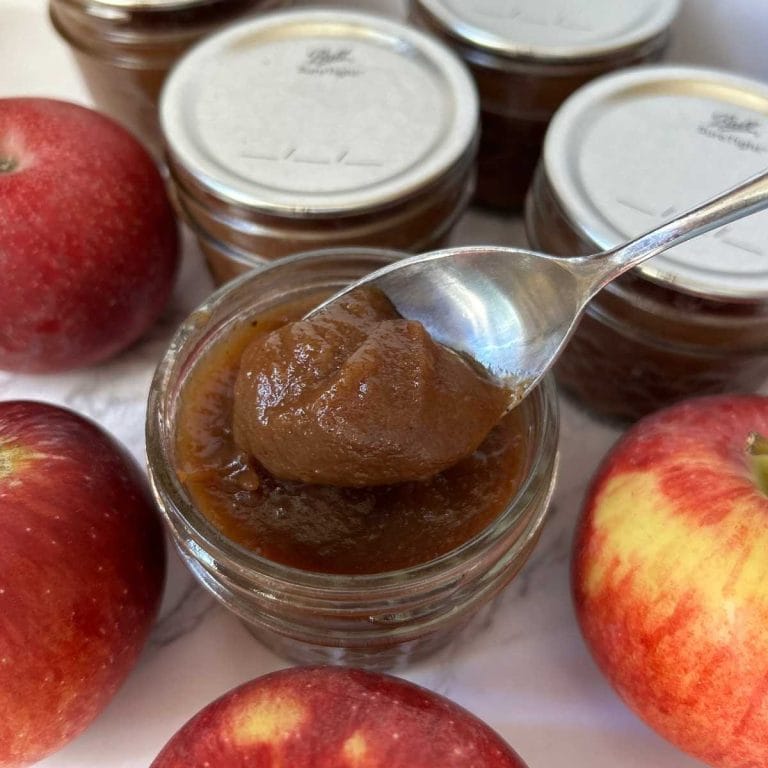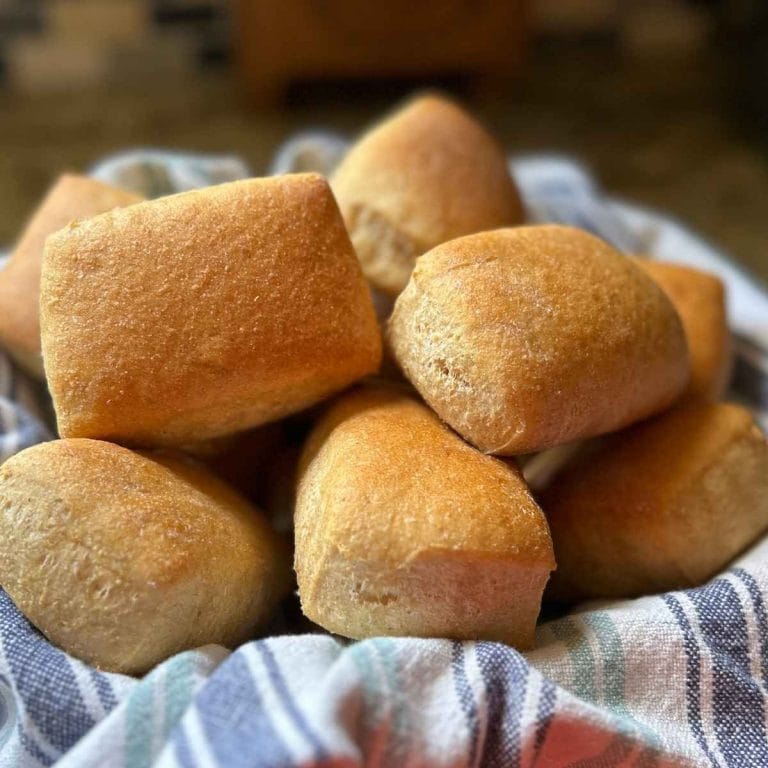Tangzhong: Soft, Fluffy Bread (Even With Fresh Milled Flour!)
Tangzhong truly is the secret to soft, fluffy fresh milled breads. If you’ve ever wondered how some places achieve that perfectly soft, springy bread texture, you’re about to meet your new best friend in bread making: Tangzhong.

Often used in Japanese Milk Bread (Shokupan), this super simple flour-and-liquid paste works magic in yeast doughs, and it’s especially helpful when baking with fresh milled flour, which tends to be thirstier and a bit denser than commercial flour.
Whether you’re baking buns, rolls, or loaves, Tangzhong adds a softness that lasts for days— it’s so easy to make for any recipe you might never go back. Try making our Super Soft Milk Bread with this!
This post contains affiliate links. As an Amazon associate or other affiliate, I earn from qualifying purchases. We try to recommend products we personally use or have used and trust. If you choose to purchase through our links in this post, we may receive a commission, at no extra cost to you. Read the full disclosure here.
What Is Tangzhong?
Tangzhong is a traditional Asian baking technique and dough improver where a small portion of the flour and liquid from a recipe is cooked into a roux-like paste before being mixed into the dough.
This roux gelatinizes the starches in the flour, helping them absorb more liquid and retain it through the baking process. The result? Bread that’s incredibly soft, pillowy, and stays fresh longer, naturally.
Why Use Tangzhong in Your Bread Recipes?
- Extends Freshness: Breads made with Tangzhong can stay soft and tender for up to 5 days.
- Adds Moisture: Perfect for thirsty whole grains and fresh milled flours.
- Enhances Texture: You’ll get an elastic crumb, pillowy texture, and improved rise.
- Easier to Handle: Tangzhong helps make doughs smoother, silkier, and less sticky.
Tangzhong vs. Yudane: What’s the Difference?
Though similar, Tangzhong and Yudane are two different methods. Both achieve similar softness in your breads, but Tangzhong is quicker and blends more seamlessly into dough.
Generally, Tangzhong is made by cooking flour and water (or milk) together until you get a paste. Yudane is made by pouring boiling water over flour, then letting it sit (also called a scald) until thickened. Learn more about Yudane here.
Tangzhong Ratio & Formula
The classic Tangzhong ratio is 1 part flour to 5 parts liquid (water or milk) and is usually a bit thinner than Yudane. I have found, though, that for my fresh milled flour recipes, I like to combine the ideas of Tangzhong with Yudane and use 1 part flour to 2 or 3 parts liquid and then cook. This makes a really thick paste that seems to work best for me. For example: 25g flour + 50g liquid = 75g Tangzhong.
If your dough recipe doesn’t already call for Tangzhong, you’ll subtract these amounts from the total flour and liquid. Generally, Tangzhong can make up 5-10% of the total flour in a recipe, but when I use the Tangzhong-Yudane combo, I get closer to 15-20%. Play around with your hydration to see what works for you! You may find a bigger or smaller ratio suits your baking better.
Tangzhong Recipe (Base Roux)
Tools
- Small saucepan or Microwave-proof bowl
- Whisk or a fork
- Kitchen scale
- Spatula
Ingredients:
- 1/2 Cup (113g) Hard White Wheat
- 1 Cup (227g) Water (or milk), warm
Instructions:
I prefer to use the microwave method because it’s quick and less clean up, but you can use a saucepan too.
Microwave Method
- In a small bowl, add flour and water and whisk until combined well.
- Microwave for 20 seconds, stirring well and getting out any lumps. Repeat 2 more times, or until it thickens into a thick pudding or paste-like consistency.
- Let cool before adding to your dough.

Stovetop Method
- In a small saucepan, whisk flour and liquid until smooth.
- Cook over medium-low heat, stirring constantly, until it thickens into a thick roux consistency (about 3–5 minutes).
- Remove from the heat and let cool before adding to your dough.
How Tangzhong Helps with Fresh Milled Flour
Fresh milled flour is nutritious and flavorful, but it can absorb more liquid, which may lead to heavier, denser loaves. Tangzhong helps by pre-hydrating some of the flour, improving dough elasticity.
It also helps give you a softer crumb by balancing and softening the bran and fiber. It can also give fresh milled doughs a better rise, making it more airy.
When to Use Tangzhong
Tangzhong works best in yeasted or sourdoughs that are typically meant to be soft (think rolls, sandwich breads), and not usually used in things meant to be crusty or chewy (pizza, bagels, baguettes, etc.)
It is ideal for any enriched or soft bread recipe like Japanese milk bread (Shokupan), Dinner rolls, Burger buns, Sandwich loaves, Cinnamon rolls, and Braided challah-style breads.
Tangzhong Do’s and Don’ts
Do:
- Let the roux cool before mixing it into the dough
- Subtract Tangzhong ingredients from the total recipe if converting
- Use in high-moisture or enriched doughs
Don’t:
- Adding to dough while hot—it can kill your yeast
- Skip kneading—Tangzhong helps, but structure and gluten formation still matters
Tangzhong is one of those “aha!” baking techniques you’ll wonder how you lived without. It’s forgiving, easy, and makes your bread irresistibly soft, even with fresh milled flour. Try it once, and you might just start Tangzhong-ing everything in sight. You’re welcome.
FAQS
Yes! But you may need to adjust hydration and fermenting times.
Yes! Store in the fridge for up to 2 days. Bring to room temperature before using in a recipe.
It was likely overheated or not stirred consistently. Use a whisk and cook slowly for best results.
Absolutely. It freezes well and retains its softness when reheated.
Nope! Water works just fine. You can also use dairy-free milk alternatives.








Thank you!!
Thank you for the information and directions. One question, say I want to make more than one loaf at a time do I use the same amount of flour and water as I do for 1 loaf or do I increase the amount based on how many loaves I am making?
Hi Katie, yes you should increase the tangzhong because you want the ratios to remain the same for hydration. So if you are doubling a recipe I would double the tangzhong.
Thank you so much for taking the time to do this. Game changer for my milled wheat bread. Sooo thrilled!